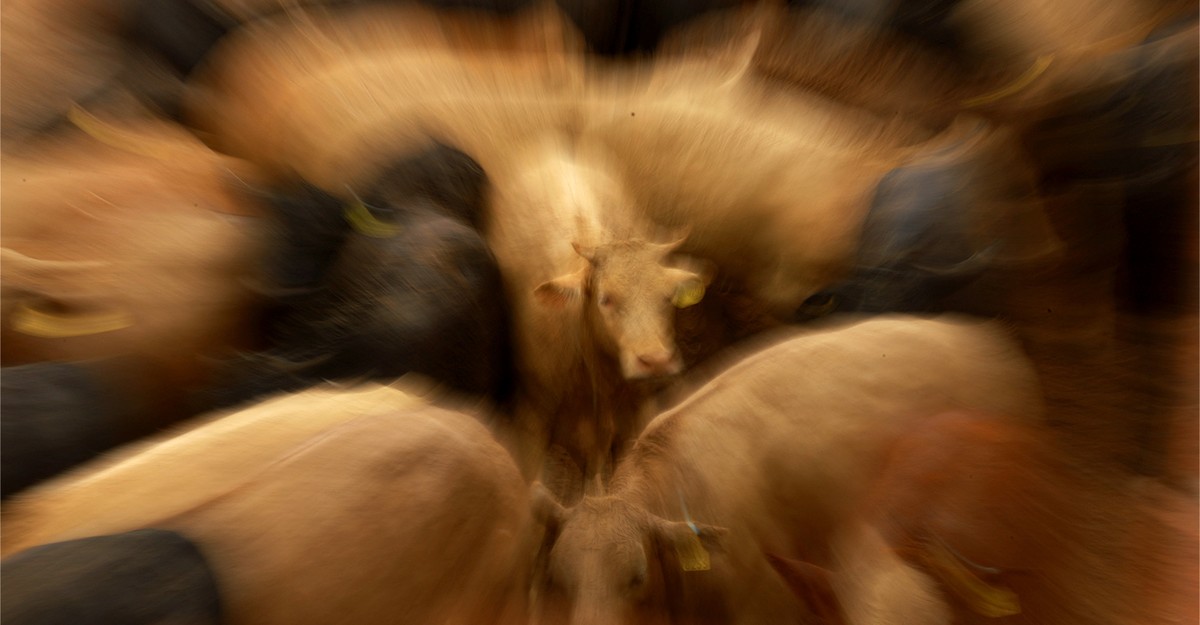Invasive Species Alert: The Spread Of The Screwworm Fly And Its Impact

Welcome to your ultimate source for breaking news, trending updates, and in-depth stories from around the world. Whether it's politics, technology, entertainment, sports, or lifestyle, we bring you real-time updates that keep you informed and ahead of the curve.
Our team works tirelessly to ensure you never miss a moment. From the latest developments in global events to the most talked-about topics on social media, our news platform is designed to deliver accurate and timely information, all in one place.
Stay in the know and join thousands of readers who trust us for reliable, up-to-date content. Explore our expertly curated articles and dive deeper into the stories that matter to you. Visit Best Website now and be part of the conversation. Don't miss out on the headlines that shape our world!
Table of Contents
Invasive Species Alert: The Spread of the Screwworm Fly and its Impact
The resurgence of the screwworm fly ( Cochliomyia hominivorax) is raising serious concerns across multiple continents. This invasive species, known for its devastating impact on livestock and even humans, is once again expanding its territory, demanding urgent attention from agricultural authorities and public health officials alike. Understanding the fly's lifecycle, its impact, and the ongoing efforts to control its spread is crucial for mitigating potential economic and health crises.
Understanding the Threat: The Screwworm Fly's Life Cycle and Impact
The screwworm fly is a parasitic insect whose larvae infest wounds on warm-blooded animals, including livestock (cattle, sheep, goats), wildlife, and even humans. Female flies lay their eggs near open wounds or on mucous membranes. The hatching larvae then burrow into the living tissue, feeding on it and causing significant damage. This can lead to:
- Severe tissue damage: Larval feeding causes extensive damage to flesh, leading to pain, infection, and potentially death in severe cases.
- Economic losses: In livestock, screwworm infestations result in significant economic losses due to reduced productivity, treatment costs, and animal mortality. Outbreaks can cripple entire agricultural sectors.
- Public health concerns: While rare, humans are also susceptible to screwworm infestations, particularly in areas with poor sanitation or inadequate wound care.
The Spread of an Invasive Species: Current Outbreaks and Geographic Distribution
Historically eradicated from North America, screwworm flies have recently reappeared in certain regions, highlighting the challenges of managing invasive species. The exact mechanisms behind these resurgences are often complex and may involve factors like:
- Movement of infested animals: The transportation of infected animals across borders plays a significant role in spreading the infestation.
- Climate change: Shifts in climate patterns could create favorable environments for screwworm fly survival and reproduction in new areas.
- Breakdown of control programs: Insufficient funding or lapses in surveillance can allow populations to build up and spread.
Current outbreaks are being closely monitored, and authorities are implementing control strategies to prevent further spread. This includes:
- Sterile Insect Technique (SIT): This highly effective method involves releasing large numbers of sterile male flies into the environment, which mate with wild females, resulting in fewer viable offspring. .
- Improved surveillance: Early detection of infestations is crucial for effective control. This involves monitoring livestock and wildlife populations and promptly reporting any suspected cases.
- Enhanced border control: Stricter regulations on animal movement across borders can help prevent the introduction of screwworm flies into new areas.
What You Can Do: Prevention and Early Detection
While large-scale control efforts are led by governments and agricultural organizations, individual vigilance is essential. If you work with livestock or spend time in areas where screwworm flies are present:
- Maintain good wound care practices: Promptly clean and treat any wounds on animals or yourself.
- Report any suspected infestations: Contact your local agricultural authorities or veterinary services immediately if you suspect a screwworm infestation.
- Support research and control programs: Advocate for funding and support initiatives aimed at preventing and controlling the spread of screwworm flies.
The resurgence of the screwworm fly serves as a stark reminder of the ongoing challenges posed by invasive species. A collaborative approach involving governments, researchers, farmers, and the public is crucial to mitigate the threat and protect both animal health and human well-being. Staying informed and taking proactive measures are essential steps in combating this significant invasive species problem.

Thank you for visiting our website, your trusted source for the latest updates and in-depth coverage on Invasive Species Alert: The Spread Of The Screwworm Fly And Its Impact. We're committed to keeping you informed with timely and accurate information to meet your curiosity and needs.
If you have any questions, suggestions, or feedback, we'd love to hear from you. Your insights are valuable to us and help us improve to serve you better. Feel free to reach out through our contact page.
Don't forget to bookmark our website and check back regularly for the latest headlines and trending topics. See you next time, and thank you for being part of our growing community!
Featured Posts
-
 Trumps Harvard Anger A Deeper Look At The Alleged Maga Financial Misconduct
May 29, 2025
Trumps Harvard Anger A Deeper Look At The Alleged Maga Financial Misconduct
May 29, 2025 -
 Are You A Georgia Driver Watch Out For This Text Message Scam
May 29, 2025
Are You A Georgia Driver Watch Out For This Text Message Scam
May 29, 2025 -
 Heartbreaking Footage Un Official Breaks Down Over Gaza Children
May 29, 2025
Heartbreaking Footage Un Official Breaks Down Over Gaza Children
May 29, 2025 -
 Report Urges Cannabis Decriminalisation London Mayor Offers Support
May 29, 2025
Report Urges Cannabis Decriminalisation London Mayor Offers Support
May 29, 2025 -
 Jaume Munar Vs Arthur Fils A Deep Dive Into Their French Open 2025 Clash
May 29, 2025
Jaume Munar Vs Arthur Fils A Deep Dive Into Their French Open 2025 Clash
May 29, 2025
